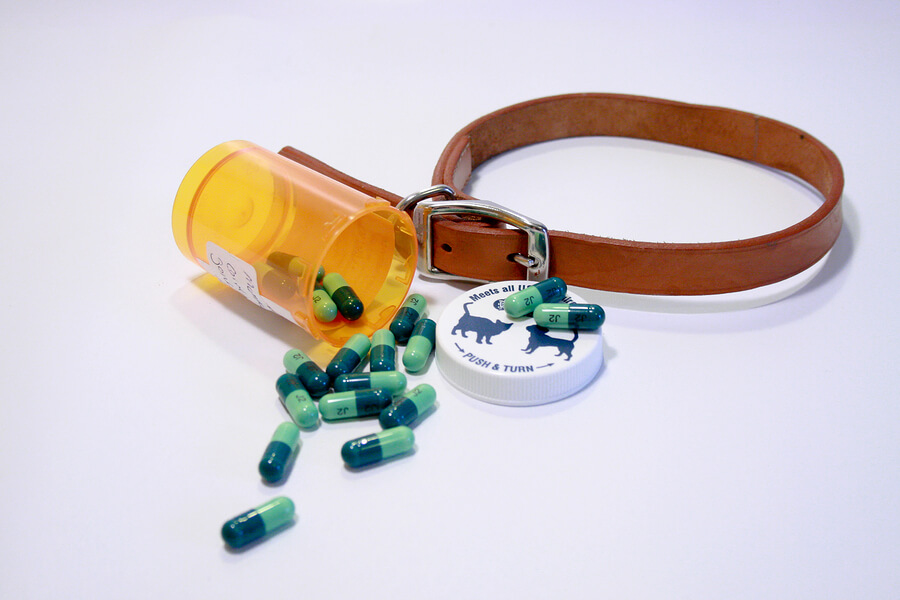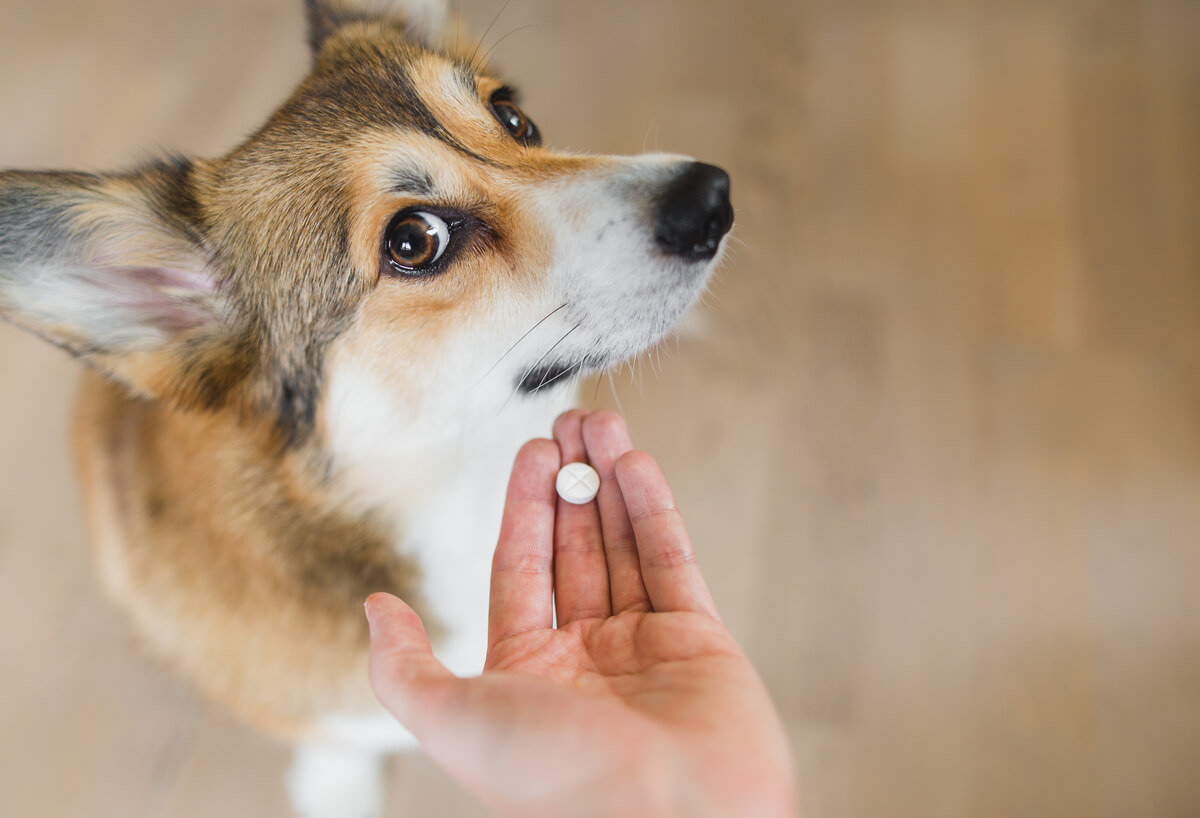Prednisone for Dogs: Uses and Side Effects


Written and verified by the vet Daniel Aguilar
When trying to treat the different illnesses your pet may be suffering from, medical professionals are careful to try to find the best possible treatment. There are so many drugs available on the market, and some of them are so potent that they can be used to treat several different diseases, always being careful to carry the dosage. Prednisone for dogs is one of them.
In this article, we will talk about the action that this drug has on your pet’s organism, along with the various uses for which it is indicated. In addition, we will share with you recommendations, contraindications and side effects that your canine could manifest. Be sure to read.
What is prednisone for dogs?
Prednisone for dogs (also called prednisolone) is a popular corticosteroid used in veterinary medicine for its potent anti-inflammatory effect and the excellent role it plays in autoimmune diseases. Once administered to the patient, it travels to the liver, where it’s metabolized and converted to its active form: prednisolone.
As long as proper therapeutic indications are followed, it’s considered to be a safe drug. In most cases, low doses and short treatments are recommended, in order to reduce the side effects of the condition to be treated.

A study on prednisone for dogs
In order to obtain better results, the use of prednisone in dogs can be combined with other drugs. Such is the case of its application together with non-steroidal anti-inflammatory drugs, better known as NSAIDs.
In the city of Virginia, a study was carried out on a group of dogs in order to analyze the gastrointestinal effects of the administration of this corticosteroid together with aspirin. All the dogs involved were in the same conditions: in good health and with their vaccination and deworming schedules up to date.
According to the administration of the drugs, the group was divided into three: prednisone, aspirin plus prednisone, and placebo. On days 5, 14, and 27, gastroduodenoscopies were performed with the aim of observing mucosal alterations. Dogs in all groups showed slight changes along with similar clinical signs, but none were considered alarming.
Finally, it was concluded that prednisone for dogs administered together with aspirin, following precise dosage according to weight and professional assessment, are safe. However, it was also recommended to use the minimum dose of both products and to accompany it with a specialized diet for the disease the dog is suffering from.
Uses and dosage of prednisone for dogs
As we mentioned at the beginning, prednisone for dogs can be used for many different conditions. To summarize, we’re going to select the three main ones that, according to research and the opinion of experts, are the most frequent.
Tumors
This drug is often used in chemotherapy treatments, combined with other drugs. Its total or partial role as an antineoplastic agent, as well as its dosage, will depend on the veterinarian. Normally, they will start by prescribing oral treatments of 2 mg/kg for 7 days and decreasing the dose to 0.5 mg/kg for the following 3 weeks.
Addison’s syndrome
Also known as hypoadrenocorticism, Addison’s syndrome occurs when the adrenal glands, which are responsible for the production of glucocorticoids (mainly cortisol), aren’t able to produce the amounts required by the body.
Prednisone-based treatment for dogs is often the treatment of choice for veterinarians. In this case, as it’s a chronic condition, doses of 0.05 to 0.22 mg/kg are administered daily. We recommend that you follow the same general indications: low doses and gradual withdrawal time.
Allergies
In an allergic reaction, a dog’s immune system tends to overreact. During this process, even some non-pathogenic elements and substances can trigger a response of this magnitude. In this type of patient, the administration of prednisone for dogs will take the role of “immunosuppressant”.
In allergies, your pet will have to go through prolonged treatment. Vets recommend that you start by administering 2.2 mg/kg every day for the first 3 weeks. Once this time has passed, you should reduce the dosage at a rate of 1 mg/kg per day the first week, 0.5 mg/kg per day the second week, and finally 0.5 mg/kg daily in the third and last week.
As you may have noticed, in all prednisone-based treatments for dogs we have emphasized three points:
- Gradual discontinuation of the drug
- Administration of minimum effective doses
- Short application time
As far as possible, you need to stick to these indications. Adverse effects and side effects tend to be common if you don’t.
Side effects of prednisone for dogs
Dogs that have undergone a very long treatment, or who haven’t followed the therapeutic indications, are more likely to present side effects. Among the main mild manifestations that may occur are the following:
- Swelling
- Polyuria (increased frequency of urination)
- Polydipsia and polyphagia (increased food and water intake)
Normally, serious side effects when using prednisone for dogs occur in prolonged treatments in which the dosage hasn’t been properly administered. As a result, the adrenocortical function may be decreased, which is what occurs in Addison’s syndrome.
Contraindications to prednisone for dogs
As with all medications, in some cases, it’s best to avoid using prednisone for dogs. Looking for a treatment other than the one we’re dealing with today will be necessary in the following situations:
- The presence of gastrointestinal ulcers, glaucoma, diabetes, renal or hepatic insufficiency.
- Infectious and fungal diseases.
- Pregnant and lactating bitches (it may cause fetal malformations, abortions, and changes in the milk).
- Taking prednisone for dogs at the same time as their vaccinations.

When it comes to medicating your pet, it’s important to consult a veterinarian before starting any treatment. Be very careful. Medications can be the best allies around to improve health, but they also become the worst enemy when they aren’t used properly.
All cited sources were thoroughly reviewed by our team to ensure their quality, reliability, currency, and validity. The bibliography of this article was considered reliable and of academic or scientific accuracy.
Cortadellas O. Dosis de prednisona en perro. ¿Cómo la ajustamos a cada condición? Barcelona. Consultado el 31 de julio de 2021. Disponible en: https://biblioguias.uam.es/citar/estilo_vancouver
Prednisolona perros, interacción con AINEs. Barcelona. Consultado el 31 de julio de 2021. Disponible en: https://www.affinity-petcare.com/vetsandclinics/es/prednisolona-perros-interaccion-con-aines
Prednisolona comprimidos microsules. Uruguay. Consultado el 31 de julio de 2021. Disponible en: http://www.laboratoriosmicrosules.com/producto/prednisolona-comprimidos/
Besteiros M. Prednisona o prednisolona para perros – Usos y efectos secundarios. España. Publicado el 22 de febrero de 2019. Consultado el 31 de julio de 2021. Disponible en: https://www.expertoanimal.com/prednisona-o-prednisolona-para-perros-usos-y-efectos-secundarios-24029.html
Rejas J. Usos de fármacos en dermatología. 2002. León, España. Consultado el 31 de julio de 2021. Disponible en: https://elearning.up.pt/ppayo/MCAC%20DERMA%2013-14/PROGRAMA/farmacos%20en%20dermatologia%20actualizacion.pdf
Graham, A. H. 2009. Effects of Prednisone or Prednisone with Ultralow-Dose Aspirin on the Gastroduodenal Mucosa of Healthy Dogs (Doctoral dissertation, Virginia Tech).
This text is provided for informational purposes only and does not replace consultation with a professional. If in doubt, consult your specialist.